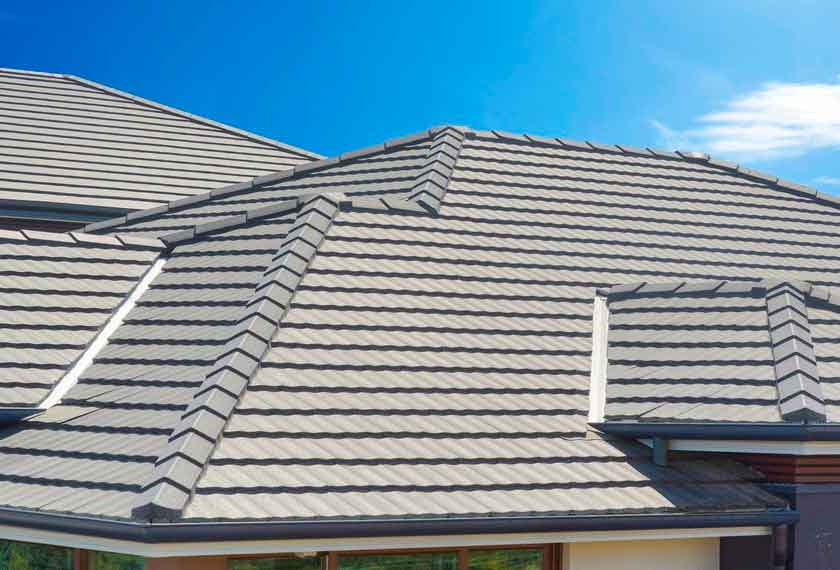Ventilating a flat or low-slope roof in San Antonio is essential for the health of your home and its inhabitants. Proper ventilation allows air to flow through the attic, reducing moisture and controlling temperatures that can cause ice dams during winter months.
This article will discuss the various methods available for ventilating a flat or low-slope roof in San Antonio, including ridge vents, soffit vents, exhaust fans, and more.
By following these guidelines, readers can ensure their homes are properly ventilated for maximum comfort and protection against environmental elements.
Understanding Roof Ventilation
Roof ventilation is a necessary component of any flat or low-slope roof in San Antonio. Without proper ventilation, heat and moisture can build up within the confines of the building envelope and cause significant damage to both its occupants and structural integrity.
Properly ventilating a roof prevents thermal bridging, reduces air infiltration, helps control condensation, moderates indoor temperatures, and helps prolong the life expectancy of your roof.
The type of ventilation system you choose depends on the size of your home, climate conditions in San Antonio, budget restrictions, and other factors. However, it’s important to ensure that enough intake vents are installed at the soffits or lower parts of the roof to allow fresh air into attic space while exhaust vents are located along ridges or higher parts of the roof to help expel hot air from within.
This will create an effective balance between incoming cool air and outgoing warm air which ensures optimal performance for your overall system.

Ridge Vents
Ridge vents are an effective way to properly ventilate a flat or low-slope roof in San Antonio. They work by allowing airflow from the soffit and out through the top of the roof, creating an upward draft that increases airflow throughout the attic space and assists with heat dissipation.
This type of ventilation system can be beneficial for both residential and commercial properties as it helps reduce energy costs associated with cooling. Additionally, ridge vents help protect roofs against damage caused by moisture build-up due to inadequate ventilation.
Installing this kind of ventilation system is relatively simple and cost-efficient compared to other types of systems; however, there are several factors to consider when choosing one. The size and shape of the roof should be taken into account when selecting a suitable ridge vent, as well as it’s level of exposure to direct sunlight and wind patterns in the area.
It is also important to ensure that any existing soffits have adequate clearance around them in order to allow proper airflow. With careful consideration given to these factors, installing a ridge vent on a flat or low-slope roof in San Antonio can provide many benefits including better energy efficiency and improved overall structural integrity over time.
Soffit Vents
Soffit vents are an essential part of proper ventilation for a flat or low-slope roof in San Antonio. They provide the necessary airflow for the attic space, allowing cool air to enter and warm air to escape.
Soffit vents serve as one of two primary means of providing adequate ventilation to a home; the other being ridge venting.
Installing soffit vents requires cutting into the eaves at least every 8 feet along each run and then covering them with screened louvers that allow outside air to flow freely through the attic space while keeping out pests and debris.
The most important factor when installing soffit vents is making sure they are properly sized according to your roof area, and ensuring there will be enough intake areas for airflow in order to keep temperatures fairly consistent throughout the attic.
Additionally, it’s important to ensure that any insulation around these intake areas does not block or restrict airflow from entering the attic. By following these steps and using high-quality materials, you can create a well-ventilated flat or low-slope roof system that will help keep your home comfortable year-round.
Box Vents
Box vents are an effective ventilation option for flat or low-slope roofs in San Antonio. They provide a simple and cost-effective solution, as they can be installed quickly with minimal disruption to roofing materials. Box vents are also highly customizable, allowing them to be adapted to fit the specific needs of any roof type that requires adequate air circulation.
Installing box vents is straightforward; firstly, mark out the area where you would like the vent to be placed, then cut a hole into the roof panel large enough to accommodate the size of your chosen vent. Once this step is complete, place the box vent into position and secure it in place with screws or bolts.
If necessary, additional insulation material should then be added around the edges of the opening before sealing up all seams and joints with caulk or sealant. Finally, make sure that there is sufficient clearance between both sides so that airflow is not blocked by other components on the roof surface such as flashing or gutters.
Proper installation of these vents ensures efficient air circulation throughout your attic space while providing protection from moisture build-up due to its waterproof construction. This helps keep mold growth at bay and maintains a healthy living environment inside your home. Additionally, their durable design ensures long-term performance even under extreme weather conditions experienced in San Antonio’s climate.
As such, box vents offer an ideal way to properly ventilate a flat or low-slope roof without having to worry about costly repairs down the line.
Exhaust Fans
Exhaust fans are an effective option for proper ventilation of flat and low-slope roofs in San Antonio. They provide a steady flow of air which can help prevent moisture buildup, as well as reduce the effects of temperature extremes during both summer and winter seasons.
Exhaust fans come in various sizes, each designed to accommodate different roof areas and climates. Installation is relatively straightforward with no complicated wiring or extra tools required. Properly installed exhaust fans can dramatically improve indoor air quality by removing excess moisture, airborne pollutants, dust particles, and odors from the space below them.
Additionally, they can also help lower energy costs associated with conditioning interior air since hot air rises up out through the fan’s outlets leaving cooler air behind it. With their numerous benefits and easy installation process, exhaust fans remain one of the most practical solutions for flat or low-slope roof ventilation in San Antonio.
It is highly recommended that homeowners take advantage of this technology to ensure that their rooftops are properly ventilated all year round.
Gable Vents
Gable vents are one of the most effective methods for ventilating a flat or low-slope roof in San Antonio. Installed at the peak of each gable end, they allow air to enter and exit the space naturally, providing much-needed ventilation that can help reduce humidity levels within an attic and prevent moisture-related issues such as mold and rot from forming.
Gable vents come in various sizes, shapes, and colors; however, it is important to choose one that will be suitable for the specific climate conditions of San Antonio. It should also be noted that these vents must be installed properly in order to ensure proper airflow throughout the roof area.
In addition to installation considerations, there are other factors to consider when selecting a good gable vent system. One aspect is size: larger openings provide more airflow than smaller ones do. Also, insulation plays an important role in helping maintain interior temperatures while preventing heat loss through an unventilated roof surface.
Furthermore, wind direction needs to be taken into account since prevailing winds have a direct impact on how well a gable vent system works. Taking all these factors into consideration before making any decisions regarding ventilation systems can help avoid costly problems down the road.

Turbine Vents
The gable vent is an effective way to properly ventilate a flat or low-slope roof in San Antonio, but another option that has proven successful for many homeowners is the turbine vent.
Turbine vents are mounted on the rooftop and use wind to draw air up and out of the attic space while also preventing moisture buildup inside. Unlike gable vents, they can be used anywhere on the roof, regardless of pitch.
Turbine vents come in several sizes depending on the amount of airflow needed. They’re typically made from either aluminum or plastic and should have louvered blades that spin with even light winds.
When selecting a size, it’s important to consider both peak wind speeds as well as average daily temperatures so you get enough fresh air into your home without introducing too much warm air on hot days.
Once installed, regular maintenance will help ensure efficient operation over time.
Conclusion
Concluding, proper ventilation of a flat or low-slope roof in San Antonio is essential.
Properly installed ridge vents, soffit vents, box vents, exhaust fans, gable vents, and turbine vents can help maintain the integrity of the roof while also allowing air to circulate inside the home.
When selecting which type of venting to use for a particular project it is important to consider local climate conditions, cost-effectiveness, ease of installation, and maintenance requirements.
Ultimately if done correctly these methods should provide adequate roof ventilation that will ensure the longevity of your roof system.


